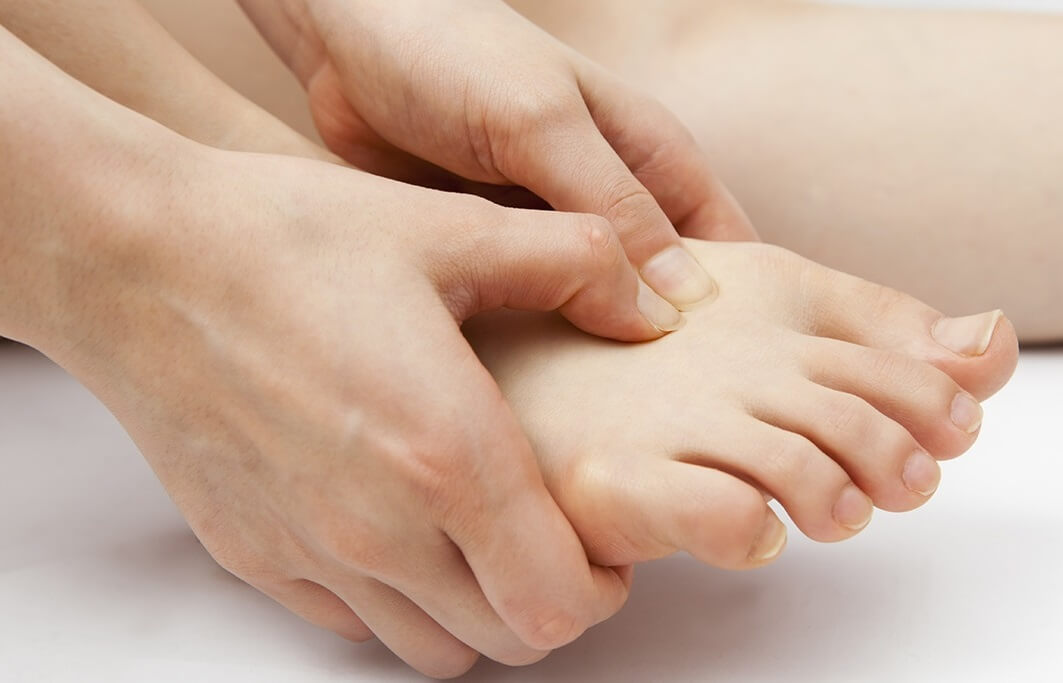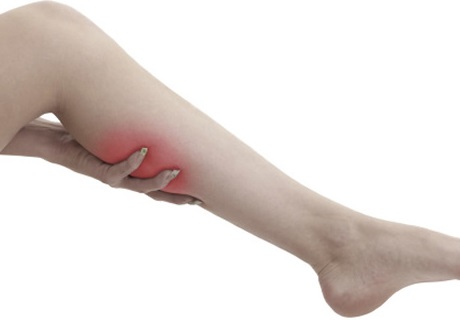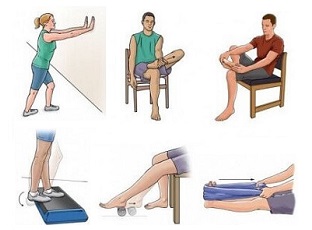- Home
- Diagnosis Guide
Foot Pain Diagnosis
Written By: Chloe Wilson BSc(Hons) Physiotherapy
Reviewed By: FPE Medical Review Board

Foot pain diagnosis is all about working out what is causing your pain so you know how to treat it effectively.
One of the simplest ways to approach foot pain diagnosis is to start by thinking where exactly the pain is.
From there you can hone-in on specific symptoms to work out what is causing your foot pain.
There might be a problem in the bones, inflammation in the tendons or damage to one of the ligaments.
There are over 100 muscles, tendons, bones and ligaments in the foot so there are countless things that can go wrong.
Foot Pain Diagnosis By Location
With foot pain diagnosis, it can help to start by thinking about where your pain is in your foot. Whilst pain can refer and spread around the foot and ankle, thinking about where the majority of the pain is, or where it started can help with working out what is wrong.
1. Top of Foot Pain
One of the most common places to get foot pain is across the top of the foot, or at the front of the ankle..
Top of foot pain may be caused by a number of problems, often related to strain from overuse. These can lead to inflammation or degeneration resulting in conditions such as tendonitis or even fractures.
Visit the Top Of Foot Pain diagnosis section to find out what problems cause pain here and how to treat them.
2. Ball Of Foot Pain

Pain in the ball of the foot is a common problem, often from overuse and high impact activities such as running and jumping.
The ball of the foot is the area underneath the toe knuckles, as shown.
A great deal of force goes through the ball of the foot when we are on our feet, particularly when wearing tight shoes or high heels which can result in conditions such as metatarsalgia and Morton's neuroma.
Visit the Ball Of Foot Pain diagnosis section to find out all about the most common causes of pain in this area and how to treat them.
3. Bottom of Foot Pain
Pain underneath your foot and foot arch pain are a common problem, particularly if you spend a lot of time on your feet.
There may be weakness and tightness in the muscles, or the foot arches may not sit correctly. These both mean the foot isn't supported properly, which can result in foot arch pain. Poor foot hygiene can also cause problems underneath the foot.
If your pain is mostly underneath your foot, visit the Bottom Of Foot Pain diagnosis section for help working out what is wrong.
4. Outer Side Foot Pain
Pain on the side of the foot may be caused by overuse, an injury, wear and tear or some type of bone deformity.
Common examples include an ankle sprain that will typically cause pain & swelling on the outer side of the foot, whereas pain on the inner side of the foot is often due to flat foot arches.
To find out more about the common causes and treatment options for pain on the inner or outer side of your foot, visit the Side Foot Pain diagnosis section.
5. Inner Foot Pain
Pain on the inside of the foot is another common problem, usually caused by repetitive strain or overuse. The pain may be felt anywhere along the inner edge of the foot from the heel to the toes.
Inner foot pain diagnosis usually reveals a problem in one of the tendons, bones, nerves or muscles that run down the inner side of the ankle and foot. It may affect the height of the foot arches which in turn affects the movement and stability of the foot and ankle.
To find out more about inner foot pain diagnosis, causes and treatment, visit the Pain On Inside Of Foot section.
6. Heel Pain
Our heels absorb most of the impact when we walk so heel pain is a common problem.
There are a number of different causes of heel pain. For example, pain at the back of the heel may be from tendonitis, bursitis or bone damage whereas pain underneath the heel is usually from plantarfasciitis or bone spurs.
To find out more, visit the Heel Pain Diagnosis section to learn about the different conditions and injuries that can cause pain around the heel and how to treat them.
7. Toe Pain
Problems can develop in any of the toes, but most commonly it's the big toe that's affected.
Toe pain may develop gradually with conditions such as bone deformities - a common problem that can lead to bunions or bent toes.
Alternatively, toes can easily be damaged in sports or inflamed from conditions such as gout or arthritis.
Find out all about the common causes of pain in the toes and how to treat them in the Toe Pain Diagnosis section.
8. Calf Pain
The calf muscles are linked to the foot by the achilles tendon so foot and calf problems often go together.
Damage to the calf muscle may cause foot pain and altered foot biomechanics such as flat feet can cause calf pain.
Calf pain can also indicate vascular or neurological problems so should be taken seriously.
Find out all about the different causes of calf pain, how to treat them and how to tell if it's something serious in the Calf Pain Diagnosis section on our sister site, knee-pain-explained.com.
9. Nerve Pain

Nerve damage frequently causes a burning sesation, stabbing pains, pins and needles, numbness and/or weakness in the feet.
The nerve may be damaged anywhere between the lower back and the toes and symptoms may be felt anywhere in between, and/or in one or both legs/feet.
Nerve pain in the foot can be very unpleasant, affecting not only daily activities but also your sleep, but there are some good treatment options.
Find out all about the common causes and treatment options in the Nerve Foot Pain Diagnosis section.
Why Is Foot Pain Diagnosis Important?
Accurate foot pain diagnosis is such an important part of treatment and recovery from foot and ankle pain. Without it, treatment tends to be general rather than specifically targeted to your problem, and whilst your foot pain may settle down in the short term, it is likely to return at some point.
Let me give you an example. You have pain in your foot so you rest it and ice it for a few days, take some painkillers and ease off the exercise. After a few weeks, it feels better so you go back to your usual activities but then the pain returns. Because you never found out why it started to cause pain or made an accurate foot pain diagnosis in the first place e.g. muscle imbalance or altered foot biomechanics, you didn’t treat it properly e.g. exercises or shoe orthotics.
Effective treatment of any foot problem relies not on simply treating the symptom of the problem e.g. instability or pain but at treating the underlying cause of the problem e.g. muscle imbalance or poor foot biomechanics.
Seeing The Doctor
Accurate foot pain diagnosis is best done by your doctor or physiotherapist. They will start by asking you about your symptoms and will want to know:
- When and how the pain started
- What other symptoms you have
- Activities that aggravate your symptoms
- Anything that helps to ease your symptoms
- If you've had any previous injuries
- If there is any daily pattern to your foot pain
- Whether things are getting better, worse or staying the same
- Any treatments that you have tried
- About any other medical conditions you have or medications that you are taking
After this, they should examine your feet, comparing left and right and looking for any abnormalities such as swelling, redness or bruising. They may also want to look at your knees and back, particularly if they suspect there may be nerve involvement.
They will look at the movements of your foot and ankle as well as the strength and flexibility of the muscles. They may also perform some special tests to assess the integrity of ligaments and other structures.
If they suspect a bony injury, you will be sent for an x-ray. They may also order blood tests or other imaging such as a CT scan or ultrasound depending on what they find.
Once they have given you a foot pain diagnosis you will either be advised how to self-manage your pain, or be sent to a specialist such as a physiotherapist, orthotist or orthopedic consultant.
Foot Pain Diagram
Pain can often radiate to more than one part of the foot which can make foot pain diagnosis tricky, but start by thinking where your biggest area of pain is, or where it started and go from there.

You can find out more about each specific area of foot pain diagnosis by visiting the full articles mentioned above.
Alternatively, if you are more of a visual person, have a look at our foot pain diagram identifiers to help you work out what is wrong.
If your pain is more widespread, visit the Foot Symptom Guide to use your symptoms, such as:
- Swollen Feet & Ankles
- Foot Cramps
- Foot Rashes
- Foot Pain When Running
- Foot Lumps & Bumps
- Sudden Foot Pain Without Injury
to help you work out what is wrong and how best to treat your foot pain.
Related Articles
Page Last Updated: 2nd December, 2025
Next Review Due: 2nd December, 2027









